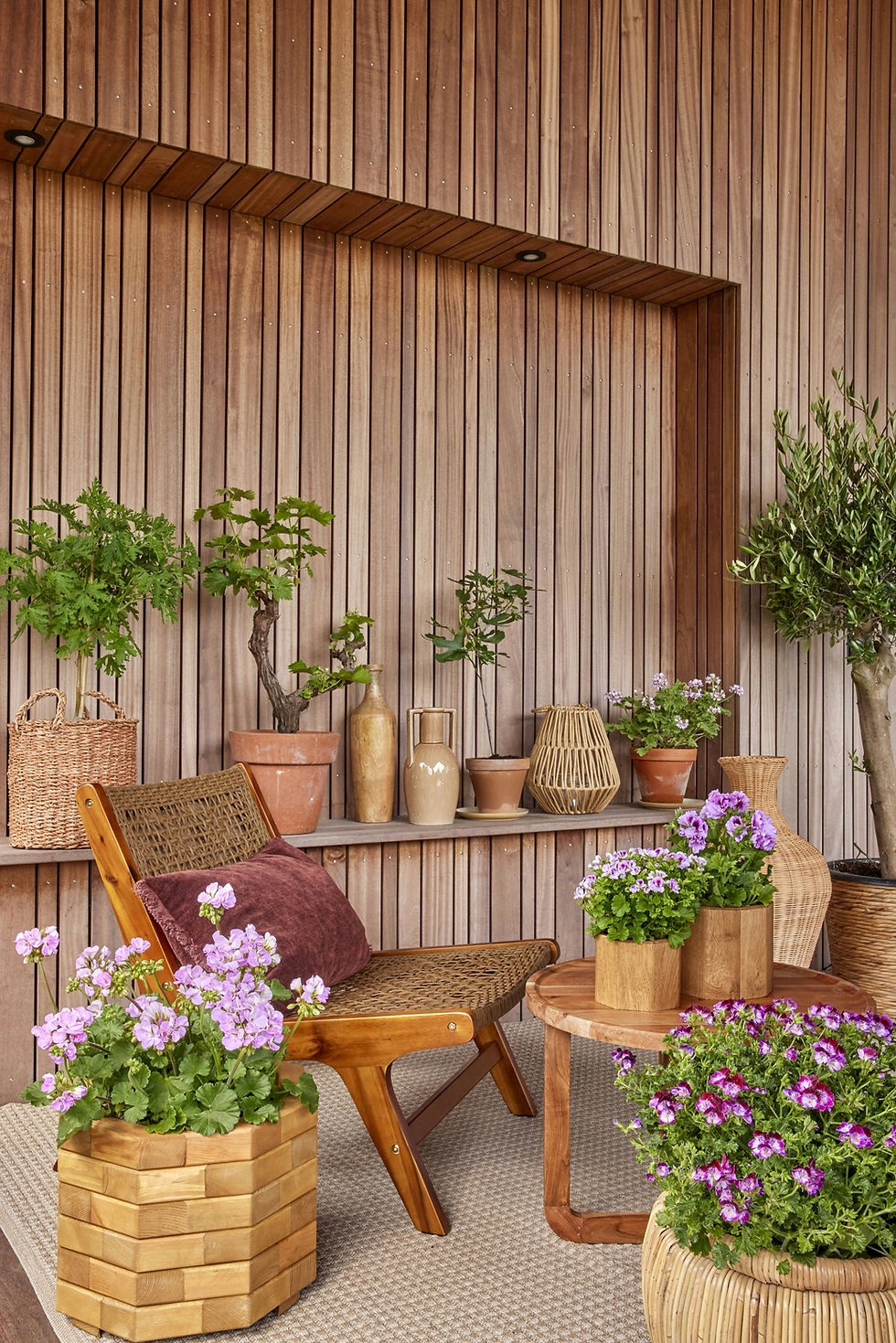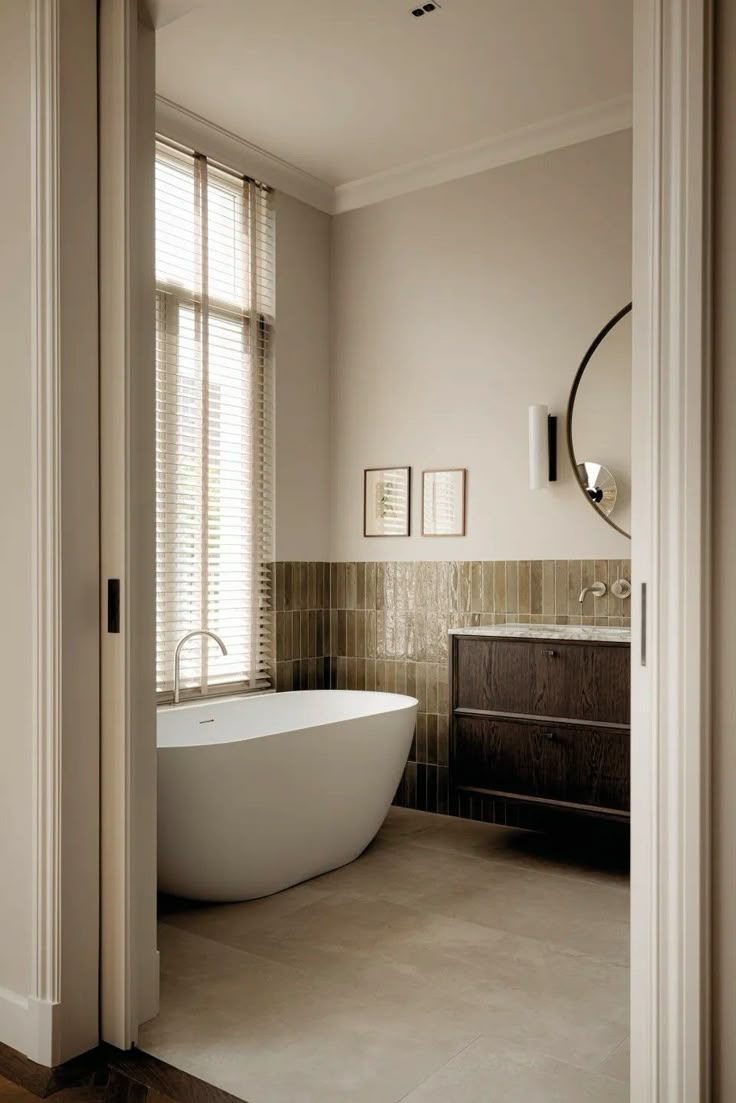Incorporating Biophilic Design Into Your Home Interiors With Wood
- Jenny Kakoudakis

- Sep 12, 2025
- 5 min read
In the seven million-odd years we have existed as the human species, less than 0.01% of our history has been spent outside of nature in an urbanized environment.
Although we live in a digital age, our brains haven't changed that much from our nature-based ancestors who relied on nature for survival. Therefore, our evolutionary drive is deeply linked to a harmony with nature, its seasons, its light, and its ability to nourish our bodies and minds.
Biophilia is a term that refers to our natural urge to embrace natural and living forms, and how it is part of our innate humanity to strive to connect with nature and natural elements.
Biophilic interior design incorporates multiple organic features that strive to recreate natural environments in our living spaces. Despite the plethora of other biophilic opinions, wood remains one of the most popular options for bringing nature into our home interiors.
Wood is much loved not only because it is beautiful, enduring, and functional, but it also offers both mental and physical biophilic benefits in your home decor.

What Is Biophilic Design? (In a Nutshell)
Although the term was coined by the psychoanalyst Erich Fromm way back in the seventies, it has become increasingly important in multiple fields, from healthcare and education to urban planning and interior design. Each of these fields recognises the deep instinctual need for natural elements for fulfilment in our lives.
Direct Connection to Mother Nature
Living things in our home environment nourish our spirits, and this element of biophilia embraces all manner of dynamic natural elements that create a direct physical connection to nature. For example, plants, water features, and living walls can all bring some life into your home’s interior.
Natural light and air also feed our senses and improve our sense of well-being. Natural forms, textures, and materials such as wood, stone, and natural wood colors all work together to bring harmony into our home environment.
Indirect Features of Biophilic Design
Indirect expressions of biophilia embrace nature indirectly through representations and simulations of nature, such as artworks that evoke nature, and color palettes that echo the natural hues of the great outdoors.
Natural patterns and organic shapes also come into play, and material elements of wood and stone also once again foster us with a sense of well-being. Light and improved airflow also play a role in indirect biophilic design elements.

Biophilic Benefits of Wood
That warm and welcoming feeling that you feel when you encounter a space with natural wood is not just because it is infinitely pleasing to the eye. The presence of wood in your living or work environment brings both physiological and psychological benefits as well.
Just Seeing Wood in Your Living Space Can Reduce Stress
Studies on visual stimulation have shown that merely the visual aspects of wood are associated with a physically relaxing effect.
The findings suggest that the visual stimulation of wood calms prefrontal cortex activity, the area of the brain that makes decisions and copes with stress.
It also suppressed the sympathetic nervous system (think fight or flight) and raised the parasympathetic nervous system activity (think rest and digest).
The Feel of Wood Can Make You Relax
The sensation of touching wood also has mental and physical benefits. A study compared the physical reactions of touch between natural wood and other surfaces, such as marble, tile, and stainless steel.
They found that the touch of wood calmed the prefrontal cortex and reduced the stress hormone called cortisol. The study also found that the touch of wood lowers heart rate and blood pressure, which are markers of stress in the human body.
The Smell of Wood Can Boost Your Mood
Many people overlook the role of smell in mood and mental well-being. Wood serves yet another biophilic function in its role in the smells of a living space.
Several studies have shown that the smell of wood causes a calming effect on people. More than that, another study found that the odors of wood and being in a wooden room made the test participants recover faster from mental fatigue.
Another study by Columbia University found that a wooden-based office design lowered stress even more than the presence of plants, which is a testament to the biophilic power of wood.
Wood Can Increase Productivity
A study in 2020 tested the cognitive performance of twenty adults in a wooden room and one without wood. The findings suggested that wood in office interior design can improve cognitive performance.
The test subjects responded to the wood-rich interior with improved attention, better productivity, and better and faster results on their cognitive tests. Wood also improved the subjects' sense of well-being and fostered more positive emotions.

How to Incorporate Wood Into Your Biophilic Design
Wooden Flooring
Although it can be expensive, a natural wood floor emanates a welcome warmth that cannot be easily imitated. Although it takes care and maintenance, a wooden floor can last a lifetime and add value to your property,
Wooden Ceilings
Wooden ceilings bring the biophilic calm and warmth to your bedroom or home. Wood ceilings are great with acoustics, dampening external sound for a more zen style of living. They also offer great insulation, which adds to the protected feelings of refuge that biophilic design offers.
Accents and Paneling
Accents such as solid wood furniture can really elevate your decor and bring your own personalized style to your space. You can also opt for solid wood planks or even reclaimed wood to bring texture, warmth, and biophilic elements into your home.
Wood-framed mirrors and photo frames can also bring texture into your decor, as well as strategically placed wood fluting detail.
Wood paneling is also great for traditional spaces where you can get your Downton Abbey on. Think libraries or formal dining rooms for a stately look.
Solid Wood Furniture
Solid wood furniture is timeless and lends itself to multiple styles. With a focus on sustainability, properly cared for solid wood furniture can outlast mass-produced furniture, saving waste and helping the planet.
Lately, there has been a growing trend to rediscover traditional methods in design elements such as furniture. The fading era of old-style carpentry reflects a deeper reflection of the culture and heritage of the region. This ethic ties right in with the biophilic "spirit of place."
These old carpentry methods are handed down, generation to generation, in high demand because they use advanced joining methods such as dovetail and mortise-and-tenon joints, which you can often find in Amish furniture for sale, for example.
Conclusion
It is a deep biological imperative in all of us to experience nature. Despite our technological advances, we are still deeply wired into the natural world.
Incorporating elements of nature, such as wooden accents, flooring, ceilings, and furniture, can bring biophilic design into our living spaces.
Connecting us with nature and improving our outlook and spiritual well-being in a world that increasingly divides us from the sights, touch, and smells that nourish our spirit.
Our writers like to blog about the home and garden. We launched the award-winning Seasons in Colour in 2015 and the luxury property and interior decor blog www.alltheprettyhomes.com in 2024 to cover all your interior design, travel and lifestyle inspiration needs.


